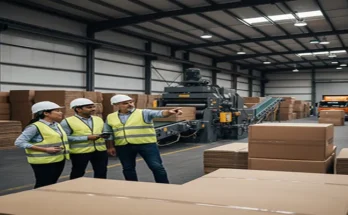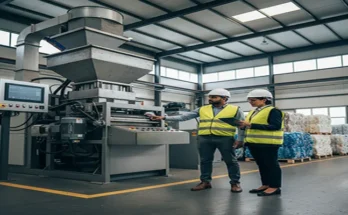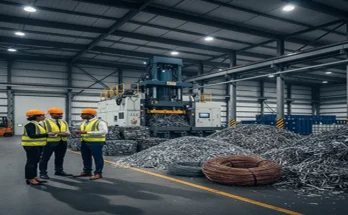The establishment of a Construction and Demolition (C&D) waste recycling facility is a critical step towards achieving a circular economy and reducing the enormous environmental burden of landfilling C&D debris, which globally accounts for a significant percentage of total solid waste. However, even a project with inherently positive goals must undergo rigorous environmental scrutiny.
To obtain the necessary permitting and ensure long-term viability, a comprehensive Environmental Impact Report (EIR) for opening a construction and demolition waste recycling facility is mandatory. This report serves as the ‘Green Blueprint,’ systematically analyzing the project’s potential environmental and socio-economic effects and outlining mitigation measures.
Key Sections of the C&D Recycling Facility EIR
An effective EIR must address all potential impacts from the facility’s construction, operation, and eventual closure. The following components are essential:
1. Project Description and Site Analysis
This section establishes the context and scale of the operation.
- Facility Design and Capacity: Detailed plans of the site layout, including processing equipment (crushers, screens, sorting lines), storage areas for incoming waste and recycled products (e.g., recycled aggregate, wood chips), and administrative buildings. Crucially, the maximum daily and annual processing capacity must be defined.
- Waste Stream Analysis: An in-depth study of the types and volumes of C&D waste the facility will accept (e.g., concrete, asphalt, wood, metals, plastics, gypsum) and the target recovery and recycling rates. This must also include protocols for identifying and managing hazardous materials (e.g., asbestos, contaminated soil) that may be mixed in.
- Buffer Zones and Proximity: Documentation showing the facility’s location relative to sensitive receptors, such as residential areas, schools, water bodies, and natural reserves. Regulatory agencies often mandate significant separation distances (buffer areas) to mitigate noise and dust impacts on nearby populations.
2. Analysis of Environmental Impacts and Mitigation Strategies
This is the core of the EIR, focusing on potential adverse effects and the measures proposed to minimize them.
| Environmental Impact | Potential Consequences | Required Mitigation Strategies |
| Air Quality & Dust | Release of Particulate Matter (and) from crushing, screening, and vehicle traffic; potential for health issues in surrounding communities. | Dust Suppression Systems (water sprayers at crushing points, fog cannons); Enclosure of key processing equipment; Paving or regularly watering internal roads; Continuous air quality monitoring. |
| Noise and Vibration | Noise from heavy machinery (crushers, loaders), trucks, and operating hours, leading to public complaints and neighborhood disturbance. | Acoustic Barriers (e.g., noise walls, berms) around the facility perimeter; Limiting high-impact operations (crushing) to daytime hours; Mufflers/soundproofing on equipment; Maintaining buffer zones. |
| Water Quality & Drainage | Stormwater runoff carrying sediment, pollutants, or leached contaminants from C&D debris piles, potentially affecting surface and groundwater. | Impermeable surfaces for all processing and storage areas; Sediment control measures (silt fences, settling ponds); Stormwater Pollution Prevention Plan (SWPPP) with regular testing. |
| Traffic and Transportation | Increased heavy truck traffic on local roads, leading to congestion, road damage, andemissions. | Designing truck routes to avoid residential areas; Scheduling deliveries/collections outside of peak hours; Traffic Impact Analysis to ensure road infrastructure can handle the load. |
| Waste Management (Residues) | The portion of C&D waste that cannot be recycled (residual waste) must be properly disposed of. | Detailed plan for the handling, storage, and transport of residual waste to an authorized landfill or other disposal/recovery facility; Maintaining a high-target recycling rate (often regulated at or higher). |
3. Public Consultation and Socio-Economic Benefits
A crucial, often required, element of the EIR is demonstrating public engagement and the project’s overall value.
- Public Consultation Summary: Documentation of all meetings, hearings, and feedback received from local residents, community groups, and regulatory bodies, along with the facility’s responses to concerns.
- Socio-Economic Contribution: A projection of new jobs created, capital investment, and the positive environmental benefits, such as conservation of natural resources (by replacing virgin aggregates) and reduced landfill dependence.
Compliance and Regulatory Assurance
The EIR is ultimately a tool for demonstrating compliance. The facility operator must secure an Authorization from the State Pollution Control Board (or equivalent environmental agency) and adhere to all local, regional, and national waste management rules.
By meticulously detailing potential impacts and providing robust mitigation plans, the Environmental Impact Report transforms the C&D waste recycling facility from a proposed concept into a viable, environmentally sound operation that contributes positively to both the economy and the sustainability of the built environment.





